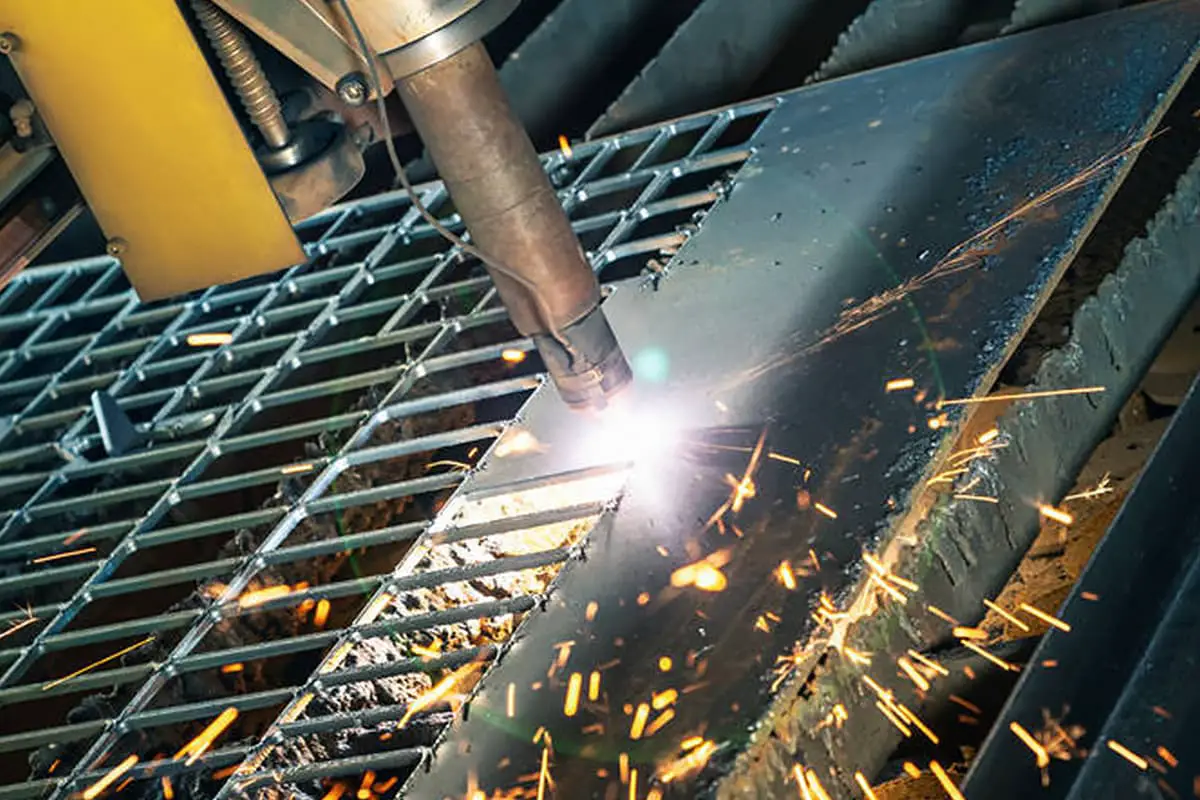Are you thinking about purchasing a cutting machine due to the need for frequent maintenance and repair work?
Or are you involved in a project that requires a high-performance cutting device?
Or do you need new equipment to replace the electric saw you are currently using?
All of these situations make plasma cutting worth considering.
These days, there are lower-cost, smaller, more portable machines flooding the market, and newer technology has improved profits and made operation easier, so it may be time to consider plasma cutting equipment.

Plasma cutting machine is now widely used in various industries, such as automobiles, locomotives, pressure vessels, aerospace, nuclear industry, shipbuilding and steel structures! Due to its wide cutting range (it can cut various non-ferrous metals such as stainless steel, aluminum, copper, titanium and common carbon steel), plasma cutting machines have been able to completely replace the use of oxygen and acetylene cutting in certain specific fields.
Plasma cutting is easy to use, produces excellent cutting results, works quickly and is highly efficient.
1. What is plasma cutting technology?
Plasma cutting is a processing method in which heat from a high-temperature plasma arc is used to partially melt (and evaporate) the metal in cutting the workpiece, and the molten metal is expelled by the momentum of high speed plasma to form a cut.
2. How does plasma cutting perform compared to gas flame cutting?
Plasma cutting is only effective on metals that can serve as conductors – low carbon steel, aluminum and stainless steel are typical examples. When cutting low carbon steel, operators will experience higher speeds and deeper cutting effects.
Gas flame cutting uses high-temperature cutting by burning or oxidizing the metal. Therefore, its scope of application is limited to black metals that can be processed using oxidation techniques, such as steel.
Metals such as aluminum and stainless steel generate oxides that restrict further oxidation. This makes it impossible for traditional flame gas cutting to process these types of materials.
Plasma cutting does not rely on oxidation treatment, so it can effectively cut aluminum, steel and other conductive metals.
Additionally, different types of gases can be used in plasma cutting, and most people these days use compressed air for plasma cutting. Air compressors can be purchased in most cities, so plasma cutting does not require combustible gases or compressed oxygen as operating gases.
3. What can I do with plasma cutting?
Plasma cutting is an ideal cutting method for cutting steel and non-ferrous metals less than 1 inch thick. Gas flame cutting requires operators to carefully control the cutting speed to maintain oxidation treatment, while plasma cutting has greater flexibility in this regard.
Plasma cutting is particularly notable in certain applications, such as sheet metal cutting, which cannot be achieved with gas flame cutting.
Furthermore, compared to mechanical cutting methods, plasma cutting is much faster, easier to perform non-linear cutting and is excellent at cutting metals such as aluminum, copper and stainless steel.
4. What can flame gas cutting do that plasma cutting cannot?
When cutting thick sheet metal, plasma cutting is more expensive than gas flame cutting because gas flame cutting does not require a power supply or compressed air, making it easier to use for some users.
Flame gas cutting is faster than plasma cutting when cutting thicker pieces of steel.
However, plasma cutting machines are much faster and more efficient at cutting thin sheets and produce better results!
5. How do I choose when purchasing a plasma cutting machine?
Once you've decided that plasma cutting is the right choice for you, consider the following:
5.1 Determine the thickness of the metal you usually cut
The first factor to determine is the thickness of the metal you usually cut. Most plasma cutting machines are classified according to cutting capacity and current size.
So, if you often cut thin metal, consider a low current plasma cutting machine. Although small machines can cut specific thicknesses of metal, the quality of the cut cannot be guaranteed.
Alternatively, you can achieve results with almost no cuts or useless metal waste. Each machine will have a defined ideal cutting thickness range – make sure the setting suits your needs.
Generally speaking, the selection of a plasma cutting machine should be 60% based on the maximum cutting thickness, which is the normal cutting thickness (to ensure the cutting effect).
Obviously, the thinner the metal, the faster the cutting speed, while the thicker the metal, the lower the cutting effect and cutting speed.
5.2 Choose the equipment’s charging duration rate
If you need to cut for a long time or use automatic cutting, be sure to check the workload duration rating of the machine.
The load duration rate is simply the continuous working time of the equipment before it needs to cool down due to overheating. The workload duration rate is typically determined as a percentage based on a 10-minute standard.
For example, a 60% duty cycle for a 100A current means you can continuously cut a 100A current output for 6 minutes (based on 10 minutes as 100%).
The longer the workload cycle, the longer you can cut continuously.
6. Can this machine provide a high frequency starting option?
Most plasma cutting machines have a pilot arc that uses high frequency to guide current through the air.
However, the high frequency can interfere with nearby electronic equipment, including computers.
Therefore, a starting method that can eliminate these high-frequency potential problems may be advantageous.
7. Comparison of wear and service life
There are several external parts on the plasma cutting torch that need to be replaced, which we usually call consumables.
The machine you need to look for must use the minimum number of consumables. Fewer consumables mean cost savings. Two of the parts that need to be replaced are the electrode and the nozzle.

























































